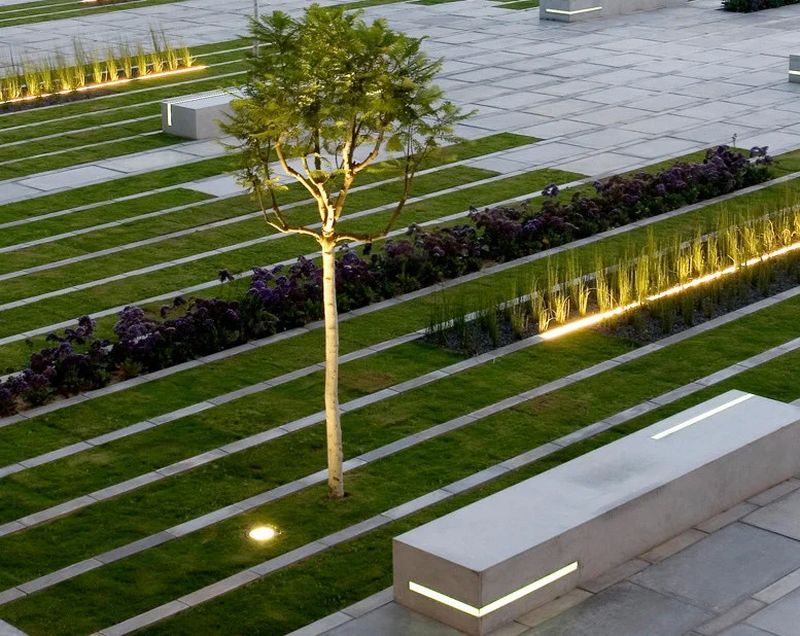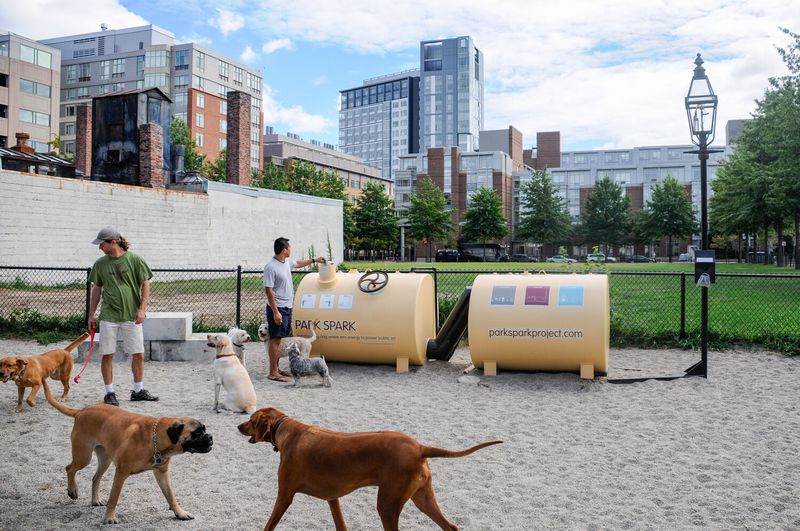Discover 4 innovative autonomous street lighting techniques
Take a look at these four different but complementary approaches for ever more innovative street lighting.

Looking for cost-effective ecological alternatives for achieving energy neutrality in urban furniture? Solar-energy powered lighting is already a must when renewing street lights, but there are plenty of other, lesser-known solutions that are just as promising. Whether you are in local government or an innovative company brimming with brilliant ideas, take a look at these four different but complementary approaches for ever more innovative street lighting!

© Photo credit: Paula / Adobe Stock
1. Bioluminescence: revolutionizing urban lighting
How many people must have dreamed of an enchanted stroll in the nighttime forest of James Cameron’s movie Avatar, where bioluminescence is ever-present? Well, here’s some good news for romantics and sci-fi fans alike: a natural biochemical reaction can be harnessed to create inexhaustible, ecological cold light and fight back against light pollution to favor the creation of dark infrastructure.
There is, however, an important drawback: low power output. Bioluminescence is therefore best kept for certain uses like backlit display panels or road and footpath markings.
A few examples of bioluminescent urban lighting projects
Glowee is a start-up that put bacteria to work to light up a display panel in a concert hall in the Yvelines department town of Rambouillet (1). Although the company closed its doors in May 2023, the idea has been kept alive in other initiatives. The Strasbourg start-up Woodlight is developing luminous markings to highlight the edges of cycle paths and roads using bioluminescent plants (2). Watch out for it in 2024!

© Glowee
Learn more about bioluminescent urban lighting
2. Biochemistry: letting the soil deliver energy
Now here’s an astonishing project! We head off to Spain where start-up company Bioo has created a natural battery that can power small LED spotlights (3).
The idea was launched in 2016 after a crowdfunding campaign, with the objective of producing and selling an indoor plant that can charge a smartphone. The start-up has come a fair way since then with soil batteries for city park lighting. A seven square-meter (75 square-foot) soil patch can generate 15Wh of energy per day—enough for six lighting points! This innovative street lighting system works according to a two-phase process:
- The organic matter contained in the soil, along with the fertilizer, finds its way into the battery through rain and watering.
- Micro-organisms decompose the organic molecules and release electrons to generate an electric current captured in the battery.

© Bioo
This innovation also features a system for limiting evaporation, which brings the soil’s water requirement down by 50%. The battery’s advantages are therefore twofold for municipalities who want to provide light without consuming energy and to rationalize their water costs.
3. Sport: letting humans provide the energy for lighting
District authorities take on the responsibility of inciting people to exercise by constructing specific sporting amenities that lead to a close interest in active design, along with other initiatives that combine sport with landscape discovery. So why not do the same for sport and lighting? After all, many train stations already have fitness apparatus that lets users charge their phones while pedaling!
Some examples of luminous sporting projects
Certain companies are already looking far ahead, like The Great Outdoor Company, which designs fully autonomous, ecological urban sports furniture. The energy expended is channeled into powering phone charging stations, lamps, and performance readouts (4). Another project, which hasn’t reached the market but whose idea is unlikely to go to waste, is the ENERGYME streetlight imagined by Dido Studio (5).

© Dido Studio
4. Biomass: when cleanliness goes with street lighting
Last but by no means least is a solution for cities with large dog populations: conversion of dog poop into energy. Sounds crazy? Well, read on! The idea came to British inventor Brian Harper in 2018, when he calculated that 10 poop bags could provide two hours of street lighting by burning the released methane (6). Meanwhile, a similar system called Park Spark has taken shape in a dog exercise park in Boston, USA, where the collected energy keeps a flame alight, just waiting for a use (7).

© Park Spark
Are you seeking ideas for renewing your urban lighting while decreasing energy use? Have you created a new product that tackles municipal issues? The Paysalia trade show puts innovation and sustainable development at the forefront. At its next edition, it invites you to discover what the town of tomorrow has in store.
(1) Libération: À Rambouillet, des bactéries marines illuminent pour la première fois la ville
(2) France Bleu: Strasbourg : une start up alsacienne veut créer des plantes bioluminescentes
(3) Bioo: Bioo Panel
(4) TGOGC: Cardio outdoor gym equipment that generates electricity
(5) Coroflot: ENERGYME Led Street Lamp
(6) The Guardian: From stools to fuels: the street lamp that runs on dog do
(7) Park Spark: Our story



